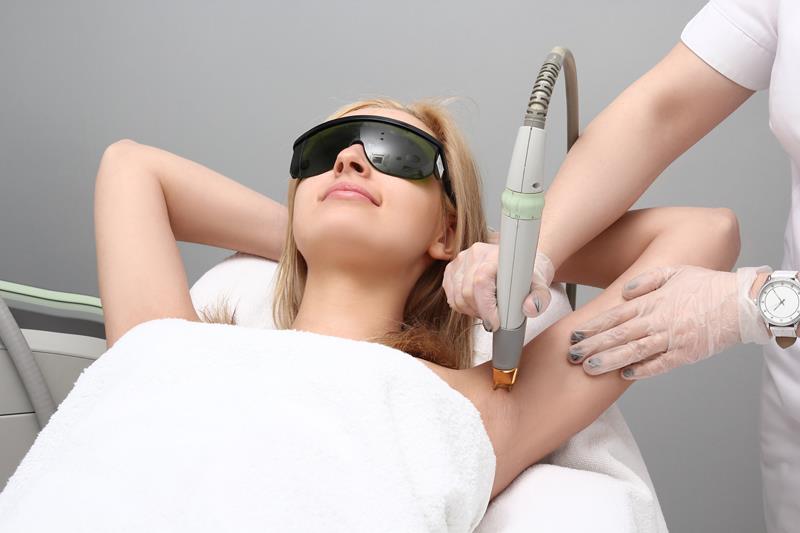
Laser hair removal is a cosmetic procedure that uses pulsed laser energy to remove unwanted hair from targeted areas while leaving surrounding skin unharmed. Common treatment areas include the chin, upper lip, chest, underarms, back, bikini line, and legs.
Unlike temporary hair removal methods such as tweezing, shaving, depilatory creams, or waxing, laser hair removal offers a more permanent and less irritating solution. It is generally safe and usually painless, though it should not be performed near the eyes due to the risk of serious damage.
Book OnlineCandidates for Laser Hair Removal
Laser hair removal targets the melanin (pigment) in hair, so the best candidates typically have dark hair and light skin. Those with blonde, red, gray, or white hair, or very dark skin, may not achieve optimal results. Recent technological advances have improved outcomes for dark-skinned patients, and research continues for effective treatment of light-colored hair.
Benefits of Laser Hair Removal
- Precise targeting of hair follicles
- Quick procedure
- Permanent or long-lasting results for up to 90% of patients
- Minimal discomfort for most patients, often described as the snapping of a rubber band against the skin
Laser Hair Removal Procedure
The procedure begins with numbing the treatment area using a topical anesthetic. A handheld device emits laser pulses that target individual hair follicles. Some methods combine laser energy with radiofrequency, and the appropriate technique is determined during consultation with a licensed provider.
Hair grows in cycles, and laser hair removal is most effective during the anagen (full-growth) stage. Since not all hairs are in this stage simultaneously, multiple treatments—usually 3 to 5 sessions spaced 4 to 8 weeks apart—are required. Treatment length depends on hair texture and the area being treated.
Recovery
After laser hair removal, mild redness, swelling, or soreness may occur but typically resolves within a few days. Cold compresses, moisturizers, or anti-inflammatory creams can help minimize discomfort. Sun exposure should be limited for a period of time following treatment.
Potential Complications
The most common issue is hair regrowth, which is usually finer and lighter than the original hair and can be treated with additional sessions. Other possible complications include:
- Skin irritation, blistering, or crusting
- Changes in pigmentation or texture
- Scarring at the treatment site
